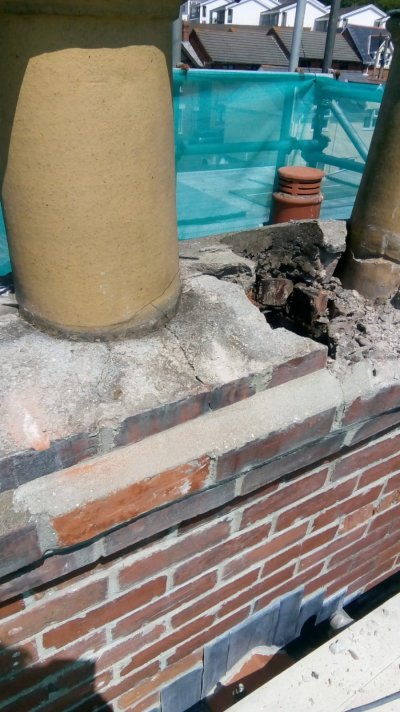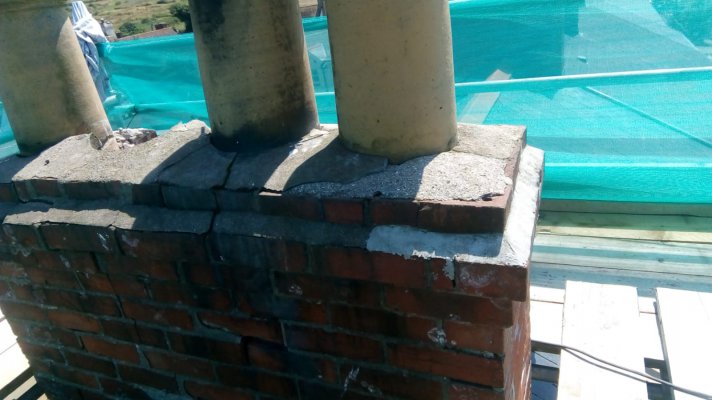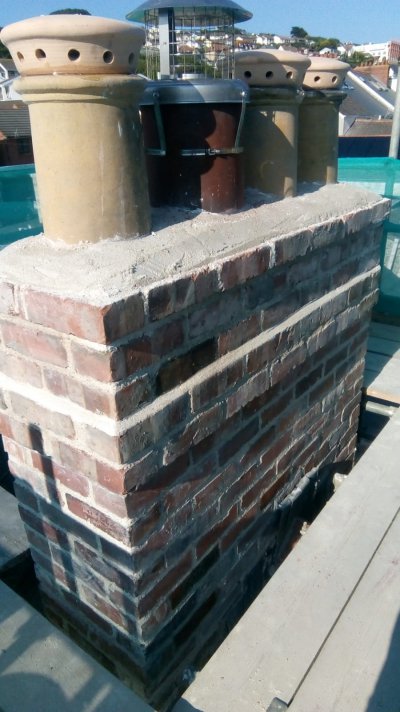Spoilt Victorian Child
Member
- Messages
- 104
- Location
- London
My neighbour had a loft conversion done (I think) around 7 or 8 years ago. They didn't alter the roof shape, just made the loft into a bedroom, with sloping ceilings and velux windows on the rear aspect.
They have said they have an ongoing leak in the bedroom, beneath where the chimney stack is, which we share.
A chimney maintenance company has said the leak is due to a missing chimney crown head, which was an alteration that was done some years before either of us owned the properties. They also pointed out the poor state of the existing mortar (you can see it's not great from ground level). They have quoted to either remove the chimey stack altogether (all of the fireplaces are currently bricked up), or rebuild the crown head and rake/repoint the existing mortar.
I'd like to understand a bit more about how Victorian chimneys were designed to work with rainwater. Does the crown have a drip sill under it like on a window sill, to stop water running directly down the stack? Isn't that what the lead flashing is supposed to cope with (eg if there's wind driven rain)? Is it possible that just the lead flashing has failed and the roof company are adding on unnecessary work in re-building the crown? Aesthetics aside, is the crown really that important?
Here's a picture of the problematic altered stack (left), and my neighbour on the other side's stack (right) which I presume to be original and with its crown. You can see my stack's been taken down about 6 courses.

They have said they have an ongoing leak in the bedroom, beneath where the chimney stack is, which we share.
A chimney maintenance company has said the leak is due to a missing chimney crown head, which was an alteration that was done some years before either of us owned the properties. They also pointed out the poor state of the existing mortar (you can see it's not great from ground level). They have quoted to either remove the chimey stack altogether (all of the fireplaces are currently bricked up), or rebuild the crown head and rake/repoint the existing mortar.
I'd like to understand a bit more about how Victorian chimneys were designed to work with rainwater. Does the crown have a drip sill under it like on a window sill, to stop water running directly down the stack? Isn't that what the lead flashing is supposed to cope with (eg if there's wind driven rain)? Is it possible that just the lead flashing has failed and the roof company are adding on unnecessary work in re-building the crown? Aesthetics aside, is the crown really that important?
Here's a picture of the problematic altered stack (left), and my neighbour on the other side's stack (right) which I presume to be original and with its crown. You can see my stack's been taken down about 6 courses.




